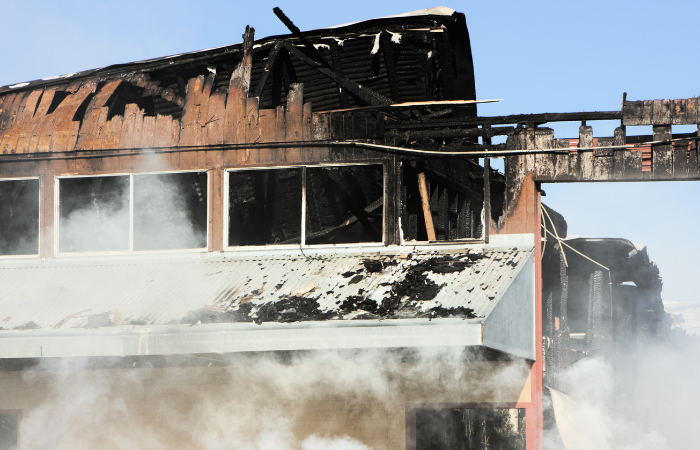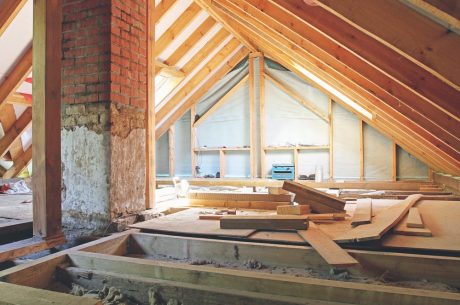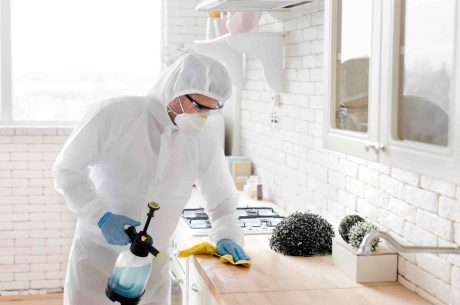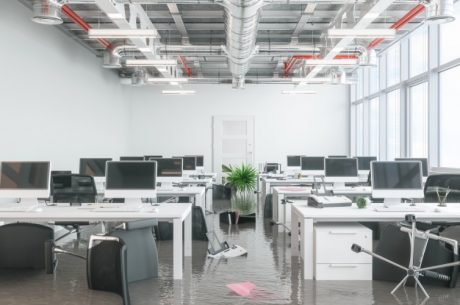
Image by Chuckschugphotography from Getty Images via Canva
Dealing with smoke damage in a house can be overwhelming and distressing. Whether caused by a fire, cooking mishap, or other incidents, the effects of smoke can linger long after the flames are extinguished. Understanding the nature of smoke damage and taking prompt, effective action is crucial to restoring your home and ensuring a safe environment.
In this guide, we’ll explore the common causes of smoke damage, essential steps for handling the cleanup, and answers to frequently asked questions, helping you navigate through this challenging situation with confidence and ease.
What Is Smoke Damage in House?
Smoke damage in a house occurs when smoke from a fire penetrates walls, ceilings, and furnishings, leaving soot, stains, and lingering odors. This damage can affect the structural integrity of the home and pose health risks due to toxic residues. Cleaning smoke damage requires specialized equipment and techniques to remove soot, neutralize odors, and restore affected areas. Prompt action prevents further damage and ensures a safe living environment.
Common Causes of Smoke Damage
There are several common causes of smoke damage, each leading to significant issues for property owners. Identifying these causes can help take preventative measures and address damage promptly. The most common causes include:
- House fires
- Cooking accidents
- Electrical malfunctions
- Heating system failures
- Candle mishaps
- Wildfires
- Smoking indoors
- Fireplace malfunctions
- Arson
- Lightning strikes
How to Handle Smoke Damage in a House
Handling smoke damage in a house requires prompt action to prevent long-term damage and health issues. Addressing the damage quickly can help restore your home to its original state. Here are seven essential steps to manage smoke damage effectively:
1. Assess the Damage
Before starting any cleanup, assess the extent of the smoke damage. This involves checking all affected areas, including walls, ceilings, furniture, and personal belongings. Look for visible soot, discoloration, and the lingering smell of smoke. Document the damage for insurance purposes by taking photos and making notes. A thorough assessment will help determine whether you need professional assistance or can manage the cleanup yourself.
2. Ventilate the Area
Proper ventilation is crucial in removing smoke odors and particles from your home. Open all windows and doors to enable fresh air to circulate throughout the house. Use fans to help disperse the smoke and improve airflow. If possible, use air purifiers with HEPA filters to capture smoke particles and reduce odors. Ventilation not only helps clear the air but also speeds up the drying process if water is used to extinguish the fire.
3. Clean Surfaces Thoroughly
Cleaning all affected surfaces is essential to remove soot and smoke residues. Start by vacuuming loose soot with a vacuum cleaner equipped with a HEPA filter. Use a dry sponge or cloth to wipe down walls, ceilings, and other hard surfaces. For stubborn soot stains, mix a solution of warm water and mild detergent or utilize specialized smoke damage cleaning products. Avoid scrubbing too hard to prevent other damage to surfaces.
4. Wash Fabrics and Upholstery
Fabrics and upholstery can absorb smoke odors and soot particles. Wash all washable fabrics, such as curtains, clothing, and bedding, in warm water with a mild detergent. Add a cup of white vinegar to the wash cycle to help neutralize odors. For non-washable items, consider professional cleaning services. Upholstered furniture may require deep cleaning with a steam cleaner or a professional upholstery cleaning service to remove smoke residues and odors effectively.
5. Remove Odor
Smoke odors can linger long after the visible damage is cleaned. Use odor-neutralizing items, such as activated charcoal or baking soda, to absorb lingering smells. Place bowls of these substances around the affected areas and leave them for several days. Additionally, use a smoke odor eliminator spray on surfaces and fabrics. If the odor persists, consider using an ozone generator or hiring a professional odor removal service to ensure complete odor elimination.
6. Check and Replace HVAC Filters
Smoke particles can infiltrate your HVAC system and spread throughout your home. Turn off your HVAC system during the cleanup process to prevent further contamination. Inspect and replace all air filters in your heating and cooling systems. Clean air ducts and vents to remove any residual soot and smoke particles. Regularly changing HVAC filters and cleaning ducts will help maintain indoor air quality and prevent the recurrence of smoke odors.
7. Inspect and Clean Electronics
Smoke and soot can damage electronic devices and appliances. Inspect all electronics for visible soot and smoke residues. Unplug devices and use a soft, dry cloth to gently wipe away any surface soot. Avoid using water or cleaning solutions on electronics. For internal cleaning, consider professional services to prevent further damage. Smoke can also cause corrosion over time, so it’s important to address any affected electronics promptly to ensure their functionality and longevity.

Image by Richjem from Getty Images via Canva
Frequently Asked Questions
Can smoke damage affect my health?
Yes, smoke damage can pose significant health risks. The soot and toxic residues left behind can cause respiratory problems, skin irritation, and eye irritation. Long-term exposure to smoke-damaged environments can lead to chronic health issues, particularly for individuals with pre-existing respiratory conditions, children, and the elderly. It’s crucial to address smoke damage promptly to ensure a safe living environment.
How long does it take to remove smoke odors from a house?
The time it takes to remove smoke odors from a house varies depending on the severity of the damage and the methods used for odor removal. It can take anywhere from a few days to several weeks. Using proper ventilation, air purifiers, odor-neutralizing products, and professional cleaning services can expedite the process. Persistent odors might require specialized treatments like ozone generators.
Can I clean the smoke damage myself, or do I need professional help?
While minor smoke damage can be addressed with DIY cleaning methods, significant or widespread damage often requires professional assistance. Professional smoke damage restoration services have specialized equipment and expertise to thoroughly clean soot, remove odors, and restore your home. They can also ensure that all health risks are mitigated. For extensive damage, it’s advisable to seek professional help to achieve the best results.
What items should be discarded after smoke damage?
Certain items may need to be discarded after smoke damage due to contamination and health risks. These can include porous materials like mattresses, upholstered furniture, carpets, and certain textiles that absorb smoke and odors deeply. Additionally, food, medications, and cosmetics exposed to smoke should be discarded as they can be unsafe to use. Consult with a professional to determine which items are salvageable and which should be replaced.
Conclusion
Dealing with smoke damage in a house can be challenging, but with prompt and effective action, you can restore your living space and ensure safety. By following these steps and addressing the damage thoroughly, you can mitigate health risks and return your home to its pre-damage condition.
For professional smoke damage restoration services, trust PuroClean of Zephyrhills. Contact us today to ensure your home is safely and effectively restored. Let our experts handle the cleanup so you can focus on moving forward.


